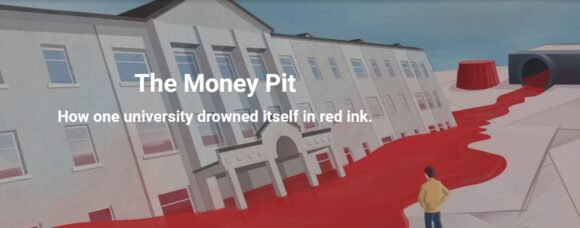Dear Commons Community,
Ohio Valley University Board of Trustees voted in December to close its doors after more than 60 years in operation. Leading up to the decision, even basic transactions had become a struggle: Students couldn’t get copies of their transcripts, and some employees hadn’t been paid for months.
Spurred by those complaints, the West Virginia Higher Education Policy Commission announced that it would convene on December 10 to determine OVU’s future. But three days before that meeting would take place, OVU’s board elected to shut down the university rather than have the State of West Virginia do it for them. And so, after decades of increasingly desperate attempts to stay alive, Ohio Valley University was finally dead.
Like so many institutions that have closed or sought to merge with another university in recent years, Ohio Valley was doomed by shrinking enrollments and unsustainable debts. But few colleges — if any — have ever gone to the lengths that OVU did to try to save themselves from extinction. In time, though, this dedication to OVU’s survival would come to justify an untenable reliance on increasingly complex, unconventional, and risky financial vehicles — vehicles that would eventually leave the institution more and more vulnerable. All the while, Ohio Valley, one of the few remaining academic bastions of the Churches of Christ, left its students in the dark about its financial state. Indeed, OVU’s torturous struggle to stay alive stands in contrast to the mathematical models that very likely would have forecast its closure years ago — a stark reminder that it’s not spreadsheets but the human beings serving on governing boards and in regulatory offices who ultimately decide when to kill colleges and universities.
The perilous state of the institution’s finances was clear to its leaders and investors as early as 2019, when OVU pleaded with its creditors to sell off its debt at a steep discount to a set of benefactors aligned with the university. “If we do not receive a positive response from substantially all of the bondholders,” an OVU representative warned in a letter dated June 12 of that year, “it will prevent OVU from continuing as an institution and likely force bankruptcy or receivership, resulting in substantial receivership costs and a ‘fire sale’ leaving little for the bondholders.”
Ultimately, those bondholders did not accept the offer, and in September 2019, the university began defaulting on its debt and had no choice but to close its doors!
A more extended analysis of OVU’s decision can be found here.
Tony



